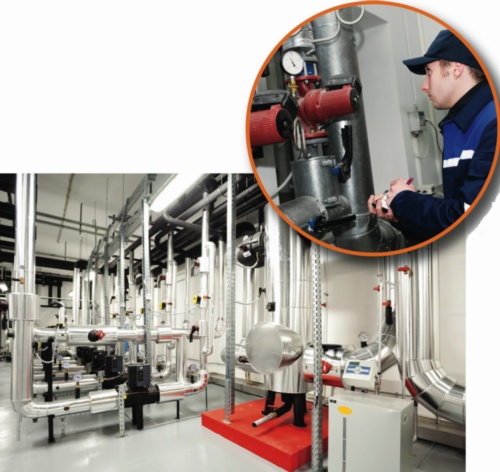Efficiently commissioned

Are you one of the crowd that regards commissioning as an expensive luxury? Let Graeme Waugh try to convert you.
When the revisions to Part L of the Building Regulations came into force in 2010, additional guidance was added regarding the submission of a commissioning plan at initial stages. It was hoped that submitting a plan at the start of the project would place increased emphasis on commissioning — ensuring systems perform as intended for their required duration.
Many companies may be wary of commissioning — primarily because it appears expensive and the developers are ultimately not responsible for paying the energy bills. In an ideal situation, commissioning would begin in the design process and continue through the build right to the end of the first year of operation.
In retrofit and refurbishment projects the situation differs, but, with an increasing number of businesses opting to install energy-saving methods in existing buildings, it seems foolish to then waste the investment through high energy use due to poorly balanced systems.
For example, overheating in commercial buildings is common, leading to increased demand for cooling in warm periods and therefore increased energy usage and emissions. Most buildings in the UK do not employ energy monitoring beyond that required for billing purposes, so it is unlikely that poorly balanced controls or systems would be detected and rectified.
During initial commissioning stages a waterborne heating and cooling system must be carefully managed to ensure its continued efficiency and potential for improvement throughout the life of the system. A properly designed and commissioned variable-flow system can deliver considerable energy savings by reducing pump head and flow by even small margins.
Measurement, both during and after commissioning, is key to retaining efficiency. By implementing a series of balancing techniques in the early stages, the flow can be periodically measured and adjusted accordingly to meet the conditions required for the system to work as efficiently as possible and use as little energy as possible.
In a hydronically balanced system, issues with efficiency derived from fluctuations in flow, pressure and temperature can be greatly reduced. This prevents extra demand on the pump and boiler, and the result is a building with increased efficiency and reduced running costs for the end users.
One way of combating extra demand is to introduce dynamic valves into a waterborne system to reduce the effect of pressure-loss changes in terminals and pipes. Any system, irrespective of its design, will need to be balanced to ensure that the design power output is always available at full design conditions. This must be done is such a way as to ensure as little extra resistance is added into the system, yet still achieving a good balance.

Using a balancing valve to adjust pressure drops in a system results in a deviation in flow. As the circuits in the system interact, there is a change in the differential pressure throughout the system, so a systematic methodology must be applied to achieve a proper balance Comparing balancing methods, the crucial difference is how they work alongside other components, interacting between circuits in the system and the compensative effects they deliver as a result.
Choosing the correct balancing method at the commissioning stage can prevent valves needing to be reset multiple times until the desired flow rate is achieved in all branches. The three key methods are the proportional method, compensated method and TA Balance method.
The first method (proportional) is derived from air-side balancing and is not necessarily always optimal in pressure drops (large pressure drops might be introduced into some circuits to achieve the proportional flow). Valves are continuously adjusted from the index circuit back towards the pumps. The concept is to achieve an equal percentage of flow against design in all circuits and then adjust the main valve or pump to achieve 100% of design. This is generally done with fixed-orifice balancing valves. There are limitations with system diagnosis.
The compensated method has advantages over the proportional method. The most important is that this methodology is optimal in pressure drops. In other words it possible to minimise the resistance that is added into the system to achieve balance. Each valve needs to be visited only once, and with modern advancements like TA-Scope Wireless less manpower is required.
The final balancing method, TA Balance, comprises a computer program built into the TA Scope measuring instrument that interfaces with TA Select software. Using the TA Balance method allows a system to be commissioned in modules.
All in all, a correctly commissioned building, including correctly balanced air and water systems, will operate at a higher efficiency and offer its occupants a much greater level of comfort in a day-to-day environment.
Graeme Waugh is technical manager with TA Hydronics.







